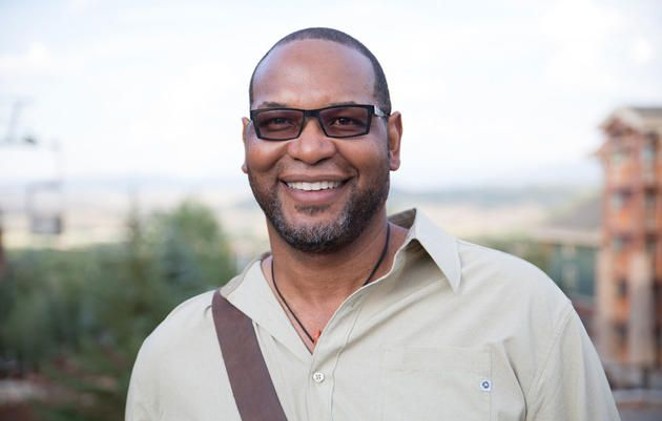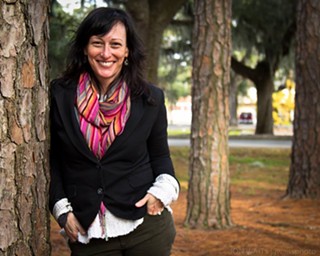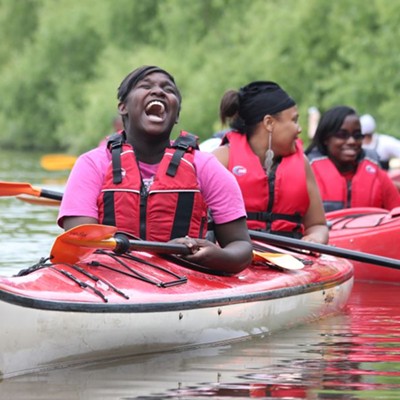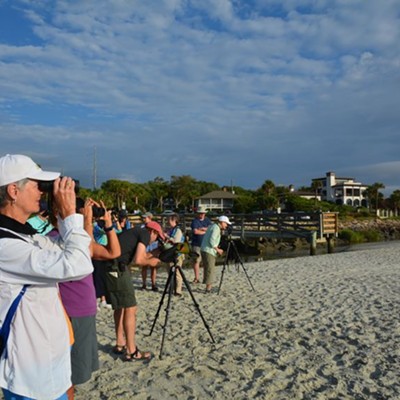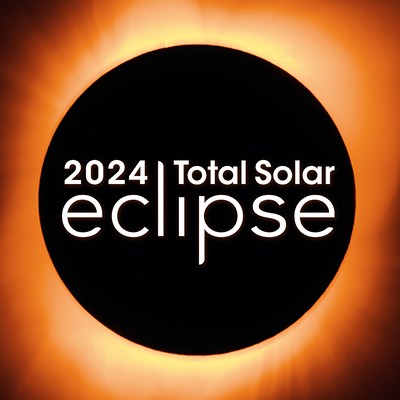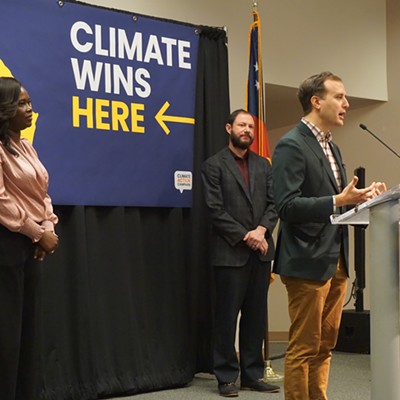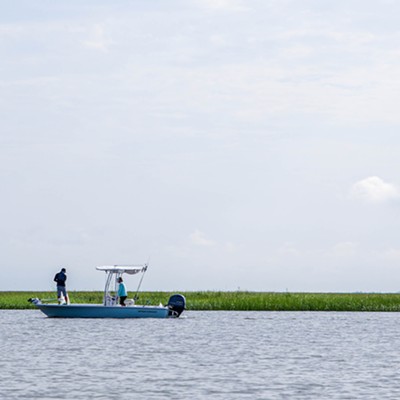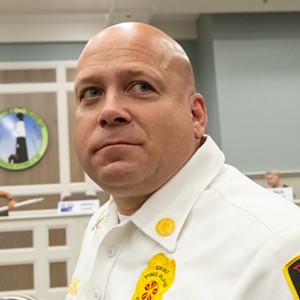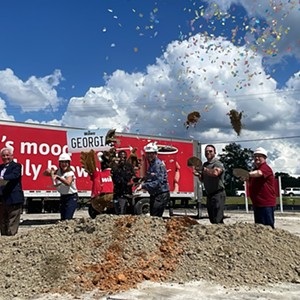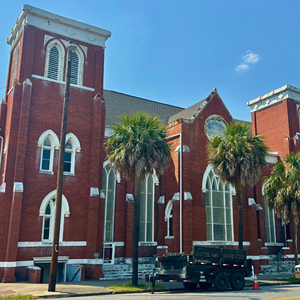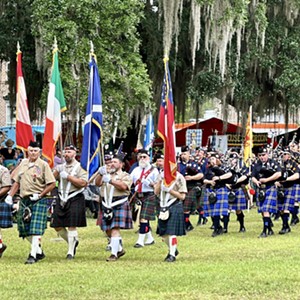AS RISING sea levels, rampant wildfires, unexpected blizzards and other disasters threaten the planet, birdwatching may seem like the environmental equivalent of rearranging the deck chairs on the Titanic.
For Dr. J. Drew Lanham, however, studying feathered species is as important as any other protective ecological action. The writer and teacher calls conserving birds and their habitat a “moral mission,” one that can help unify humanity as it faces the earth’s challenges.
A rare African-American voice in the environmental conservation movement, he is the author of The Home Place: Memoirs of a Colored Man's Love Affair with Nature and also pens tongue-in-cheek articles like “9 Rules for the Black Birder,” which include “Don’t bird in a hoodie—ever.”
The Clemson University distinguished professor of Wildlife Ecology will deliver the closing keynote address at the Choosing to Lead Conference, taking place this weekend on Jekyll Island.
Hosted by environmental advocacy non-profit One Hundred Miles, the two-day conference is open to the public and offers workshops, training and different tracks for professionals and activists as well as field trips to some of the Georgia coast’s most historical and pristine spots.
We talked with Dr. Lanham by phone just after his daily run in one of his favorite South Carolina wildlife preserves, birds chirping in the background.
As an ornithologist based in the Southeast, were you surprised that the Georgia Coast was recently designated a “Landscape of Hemispheric Importance?”
Not at all. When you think about where we are the map, it makes sense: The flights of red knots, long-billed curlews and semipalmated sandpipers—and then the importance of some of those areas for piping clovers and American oystercatchers—the list just goes on and on. So it's not surprising to me; it's very timely and very important at a time when conservation and the environment are under assault, in part by deregulation. Steps like this designation can help.
What are the biggest threats to Southeastern coastal environment?
Globally, we can talk about climate change and rising sea levels. The impacts they have are not just on the shoreline, the coast and beaches, but further inland at the salt marsh, where we are losing habitat that is the nursery for not just many birds but also blue crab and oysters.
Winnowing down to where we are, the threat is development. Everyone loves the coast and wants to be there, to have some sort of stake in it. I think it’s critical right now in thinking about how we hold some back, that we don’t develop every square inch. The South Atlantic coast is demographically, at least from a growth perspective, kind of off the charts right now.
Taking a step back, I think in trying to understand how we keep as much as much wild as we can is one of the critical measures, and we’re going to have to find new ways to do that. I don’t think we’re going to be able to depend on the federal government to lead the way anymore.
I’m trying to be—well, I won’t parse words: The current administration has shown no regards for conservation and is undoing many of the laws and regulations that would at least help protect what we have. We’re going to have to form new kinds of partnerships with non-government conservation organizations and private citizens. I think that’s paramount.
What role do culture and ethnicity play in the conservation and the environmental movements? How do we, as you say, “color the conservation conversation?”
Binding conservation to culture is especially important in broadening the conversation so that we go beyond the traditional all-white, mostly older male choir and bring others into the fold.
I think the first thing is recognizing that there are obviously different viewpoints. As a birder, I’m able to look at a landscape and see all kinds of different birds and how they help form the whole picture—they’re each sort of a puzzle piece of a whole that we risk destabilizing if we remove one from it. I like to think human beings are no different.
When we begin to understand that people have different ideas of what nature is, what it means, then we begin to parse apart culture and think about how different perspectives may change not only based upon their experiences in nature but also their history in nature.
In the Southeast, as a black man, I necessarily focus on my ancestors’ history in this landscape. What it means to many of us—though of course there’s not one unified black thought about nature—is enslavement.
I drop back to some of the experiences I’ve had birding and teaching ornithology on the coast, and one of the richest places that we can go are these old rice fields, the impoundments. This time of year, they’re full of waterfowl, everything from tundra swans to black ducks.
I was on one of these expeditions with some folks and we were talking about what we were seeing, and someone asked a question about how [the Dept. of Natural Resources] managed the landscape. There was this mistaken idea that these impoundments were recent creations, that the environment had been altered for conservation. I talked a bit about rice culture and Sea Island cotton culture, and people began to understand that these constructs were made by human hands, whether in shackles or by conservation efforts, moved in ways to make the environment that we see.
For black folks, it’s important to revisit that painful portion of history because we own the lands we walk on. It may not always be by title and deed, even though at one point in time those Sea Islands were once black-owned. You look at those islands and what they meant to enslaved, then freed people, and then to lose those lands that are now extraordinarily valuable, and you want people to understand that they already paid for many of these lands by their ancestors’ sweat and toil.
These public lands belong to us just as much as they belong to others. That’s an important part of that connection, for people to understand the history. I tell those stories to whoever will listen, and I’m constantly trying to learn what rice culture meant to this nation, what it meant to the wealth of the Southeast and what it now means to conservation: People can know that this rice impoundment wasn’t created by some government agency but by people created it under duress a long time ago.
You also teach Hunting and Wildlife Management. How do hunting and environmentalism work together?
In North America, the conservation movement had to be enacted in part because of hunters who acted irresponsibly, but in the end it was hunters who came to the fore to really bring many species back—the white-tailed deer, wild turkeys and many species of waterfowl. I try to help birders and non-hunters understand how responsible, conservationist hunters helped push conservation forward in many ways.
For me, hunting is connected to who I am spiritually. If you had to label me, I go from pantheist to Zen in any given day. Any day I’m out in nature I find myself in some sort of reverence and worship, and that includes being on the deer stand. As I’m sitting there, I’m in awe of everything that goes on around me, and if I’m given the opportunity to kill a deer—and I only hunt what I’m going to eat—I see it as part of that grand cycle. You won’t ever hear me call it sporting. Sport invokes competition. For me, hunting is always an education.
It’s also a way to connect. When I’m field dressing a deer, I’m elbow deep and feeling life ebb away that eventually become part of me. It’s an immersion.
As both an academic and as someone “elbow deep” in nature’s cycles, what are the steps to engage younger generations, especially younger African Americans in urban cities, in conservation efforts and see its relevance in political, economic and social contexts?
I always tell people, no matter what creature, or what bird they may be looking at, whether they can identify it or not, that creature has the same requisites as you do: Clean air, clean water, space to live where it feels safe and secure, the ability regenerate itself over time with a mate of its choosing.
If we step back and think about what it is we require and how we want the best for our friends and family, we don’t see ourselves as separate or above another other species, but part of something greater. The environment is part of all those other contexts.
It’s a Golden Rule—or a Green Rule, really: By doing our best by nature, we’re doing best for ourselves.

